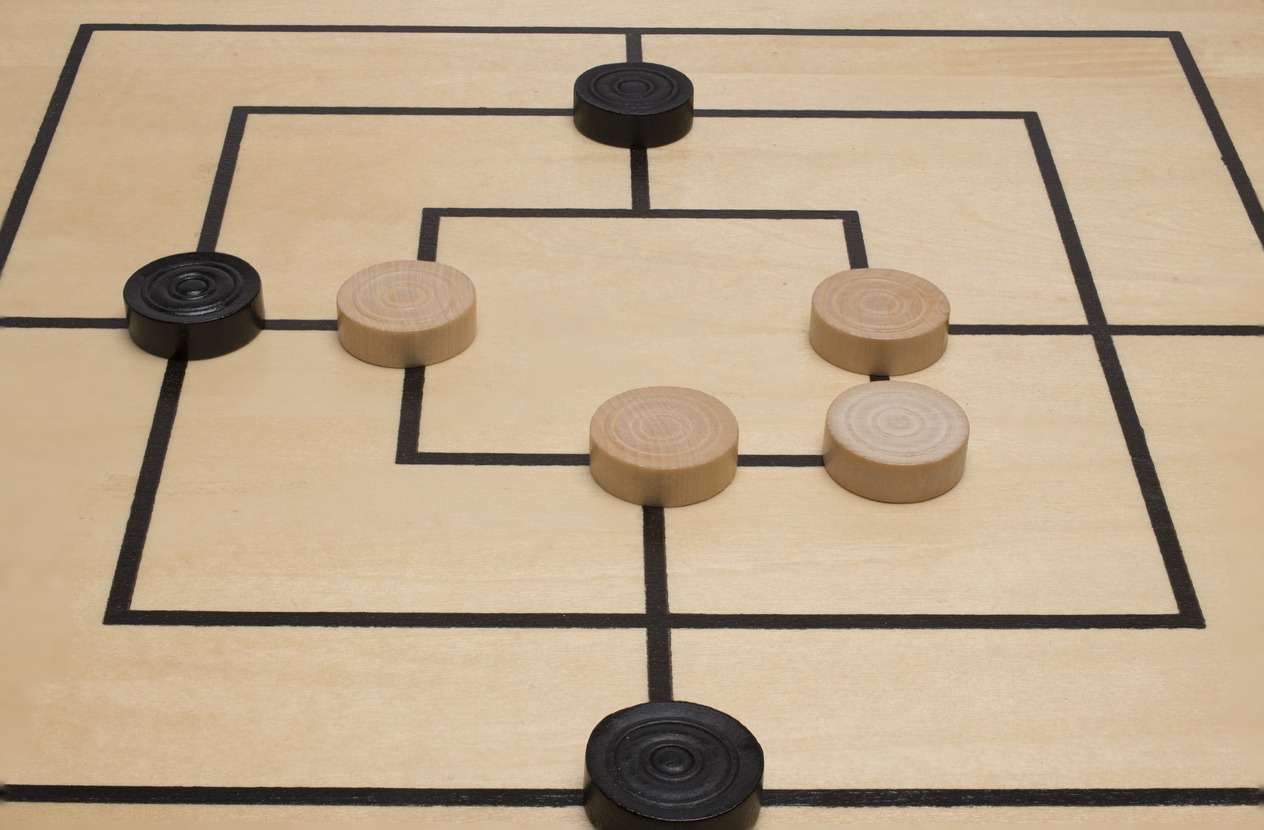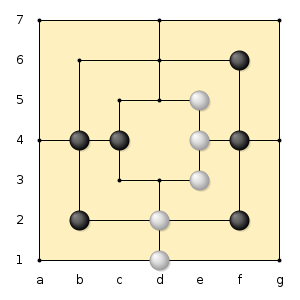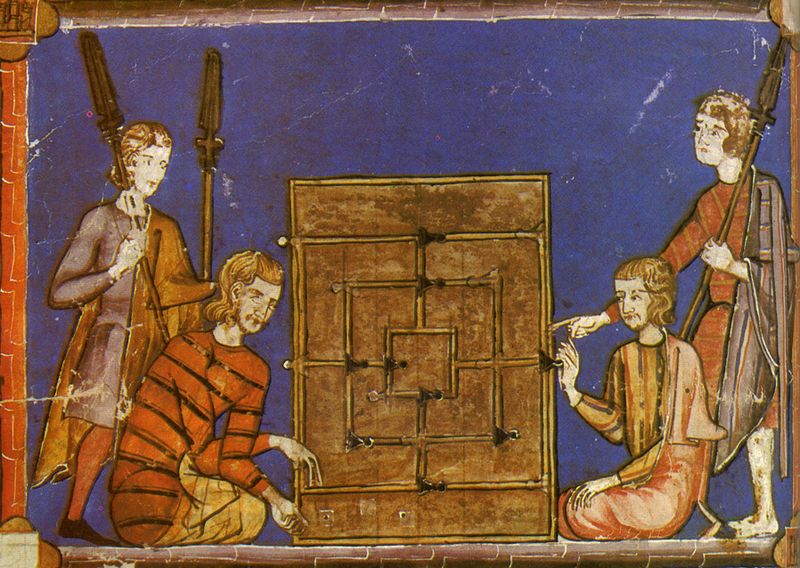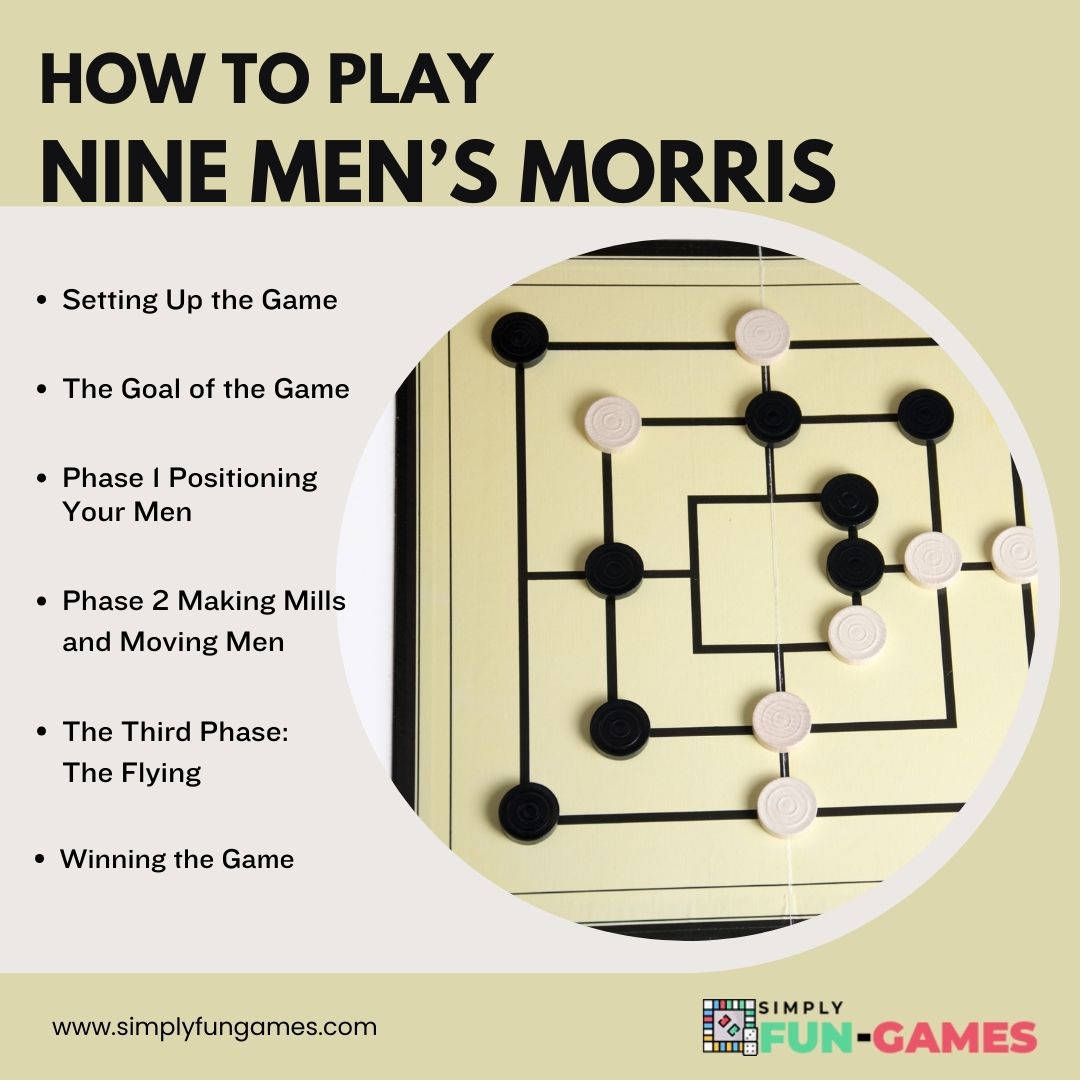Introduction
The timeless game of Nine Men’s Morris has enthralled players for centuries. Since its inception during the Roman Empire, it has continued to be a favorite pastime and a brain exercise, gaining prominence during medieval and Renaissance times in Europe. This game gives the current generation a look into forefathers’ competitive spirit and strategic thinking, transcending time. Nine Men’s Morris allows people to engage face-to-face in a world where digital connections predominate. Sitting around a physical board while playing with friends or family can encourage real social interactions, establish bonding, and provide lifelong memories.
Each game is distinct and stimulating because of the straightforward rules and wide range of potential outcomes. Nine Men’s Morris necessitates strategic preparation, flexibility, and the capacity to outwit your opponent with its grid board and the positioning of tokens to build mills. Even though it may be an old game, players may still enjoy it online or through mobile applications since it has found a home in the digital world. Nine Men’s Morris may now be played digitally on computers, cellphones, and tablets, making it available to anybody with an electronic device. Because of its portability, you can play the game whenever you choose, whether you’re resting at home, on the road, or during your commute.
What is Nine Men’s Morris?
Nine Men’s Morris is a well-known strategy board game played worldwide under different names and variations. It has its origins in Europe during the Roman Empire of the 14th century. The game has also been known as cowboy checkers in North America, and checkerboards occasionally have the game’s board printed on the reverse. Nine Men’s Morris is a game of best strategy and technique; every move needs to be calculated and precise to win the game. It has been demonstrated that the game ends in a draw when both players play flawlessly.
The Morris board has three circular squares with multiple lines and 24 intersection points. To get three in a row on any line, two players, each of whom has nine counters of a single color, alternately place pieces on the points. The player can then capture one unfavorable counter, not a milled counter. Once everyone has placed their counters, the players alternately move while carrying the same object. A mill can be started by removing one component from the production line; adding that piece back to the production line counts as a new mill. The winner is the one who manages to take all but two of the enemy pieces.
Brief History of Nine Men’s Morris
Just like other ancient board games that have stood the test of time, Nine Men’s Morris, also called Mills, is another game with obscure historical beginnings. The game was said to be found on board that was engraved on a slab at the Egyptian Temple at Kurna in 1300 BCE. However, it was unclear if the board was created simultaneously with the Temple or if Roman tourists carved it. The same boards, which appear to have similar characteristics, have also been discovered carved into Bronze Age graves in Ireland and Bronze Age levels in the Troy excavation site in Turkey.
With these pieces of artifacts, it appears that Romans have been familiar with the game because boards are frequently seen carved into stone slabs in residences, businesses, and public spaces; in fact, a game with similar features as Nine Men’s Morris has been mentioned in Ovid’s Ars Amatoria: The game was as a game that is split into sections representing the months of the year. The winner must get all the pieces on a table in a straight line. The game’s original name appears to have been “Marcellus,” which comes from the Latin word for “a game piece.” Although others claim that the name derives from the Old English word “mere,” which means “borders,” the game is sometimes called Merels and many other names to describe its many variants.
The popularity of the game peaked during the medieval time in England. Nine Men’s Morris boards with carvings have been discovered inside the cloister seats at the English cathedrals of Canterbury, Gloucester, Norwich, Salisbury, and Westminster Abbey. A pillar’s base in Chester Cathedral has a second board carved into it. On occasion, enormous outside boards were carved into village fields, as mentioned by Titania in Shakespeare’s 16th-century play A Midsummer Night’s Dream. Many speculations have been made on the meaning and origin of the term. However, the word morris has nothing to do with the old English dance. It comes from the Latin word Marcellus, which means a counter or gaming piece.
The game continues to spread widely throughout the three old world continents. Many people played it, especially idle monks and priests who carved the game’s board into the walls and benches of their magnificent abbeys and cathedrals. It was brought to the Americas by settlers when the locals claimed it as their own during the Renaissance.
Nine Mens Morris’ popularity waned before it could completely rule all the inhabited continents. Nevertheless, the game is still fondly recalled today, and it frequently appears in more daring game compendia that explore beyond chess and backgammon.
How to Play Nine Men’s Morris

Nine Men’s Morris is an abstract strategy board game for two players. It is closely linked with other board games such as Morabaraba, three men’s Morris, six men’s Morris, and twelve men’s Morris, and is known by various names such as Mills. Numerous Nine Men’s Morris game settings are available to suit your individual preferences. At least a portion of the game’s appeal throughout history can be attributed to how easy it was to assemble one’s boards and pieces in previous times when people were less wealthy.
1. Setting Up the Game
To play the game, you only need a playing board consisting of three squares stacked on top of one another. Each square has 8 points: one in the center of each side, one in each corner. Each square’s center has a set of connected points that form a grid. Players will compete during the game to position their men in these locations to form lines of three. You will also need nine tokens or “men” for each player, commonly divided into two colors to clarify which men belong to which player.
2. The Goal of the Game
Players can place their tokens at any intersection on the board, which serves as a location for placement. You must arrange your pieces into vertical or horizontal rows of three called mills to win the game. The game is made up of three phases. The game will continue until one player has two pieces left or less and is eliminated or by making sure the opponent cannot make any legitimate movements.
3. Phase 1 Positioning Your Men
Flip a coin to start the game and determine who places the first men on the board. Any open location on the board can be occupied by one of that player’s men. The other player places his men after the first player, and the process continues until both players have played down all nine of their men. As soon as the second player places his men, you can begin finishing Mills and capturing components. A mill is created whenever three player/s men line up in a row on the board. You can take one of your opponent’s pieces off the board when you create a mill. This captures the removed piece, making it unplayable after removal. Expert players advise newbies not to get drawn by trying too hard to make Mills at this initial time. Instead, positioning yourself for strong, repeatable Mills in the game’s second phase is the optimal strategy.
4. Phase 2 Making Mills and Moving Men
The game’s second phase starts once each player has set up all nine of his men on the playing board. During this phase, The players can move their men around the gaming board. During this phase, you should actively aim to create Mills while keeping an eye on stopping your opponents from creating their own Mills. The first player can move one of their men on the game board to any place connected by a line and followed by the next player. The process continues until one player has three pieces left.
During this phase, the player can break and re-form Mills as often as he likes. Each time a player reform a Mill, he can have the opportunity to eliminate a man from the opponent’s side. However, the player cannot take the opponent’s Mill unless there is no option but to take the men. The game ends if one player has used all their legal move or if one player has two pieces left.
5. The Third Phase: The Flying
The Flying phase is the name of the third and final space. Phase 2 is comparable to this phase in that each player advances a piece one space per turn. Players, however, are not limited to merely nearby spaces; they may move their men to any free place on the board. One player is at imminent risk of losing when they have three pieces; technically, a player can still build a mill with only three pieces, but it may depend on how many pieces the opponent still has. The player with three pieces gains the ability to fly in the third phase to provide the player in the losing position a chance. Although it is unlikely that this will be enough to save them, it does give them a chance to resist losing the game.
6. Winning the Game
Nine Men’s Morris is just as simple to end as it was to start to play. The game is over once your opponent has only two men left, which prevents them from making Mills. The game is usually over for that player shortly after the flying phase starts. If the opponent has no legal moves, the game may stop at any point.
Tips to Win Nine Men’s Morris
It needs careful planning and tactical strategy to outwit your opponent in the strategic board game Nine Men’s Morris. Here are some tips and techniques to increase your chances of winning Nine Men’s Morris.
- Establish Your Center – The most valued spot on the board is the central point location. At the game’s first phase, ensure you have established control of the center because they offer more chances to build mills. How you play the entire game will depend on your control of the center.
- Forming Mills – Building mills is essential in Nine Men’s Morris. Try to arrange your pieces so that you can concurrently form several mills. The ability to do this offers you the advantage of limiting your opponent’s options and raising your chances of winning.
- Make mobility a priority – Place your men in locations that allow flexibility and various moves throughout the first phase. This enables you to adjust to your opponent’s strategy and maintain a powerful presence everywhere. Stay away from positions that restrict your mobility.
- Block the opponent – Keep track of your opponent’s actions as the game continues and look for chances to block their men. Limiting your opponent’s movements or preventing them from establishing mills can significantly place them in a disadvantageous position. Be proactive and prepare your actions to thwart their plans.
- Keep an eye out for double mills – A double mill occurs when a player simultaneously creates two mills. The opponent faces a serious threat because they must give up a piece in any circumstance. While lowering the likelihood that your opponent will do the same, look for opportunities to set up double mills.
Conclusion
9 Men’s Morris is a fascinating strategic game that has enthralled players for ages. The game’s historical roots span ancient times, providing a feeling of depth and tradition to each match. Its basic yet strategic gameplay offers a great challenge, challenging players to predict their opponent’s moves while carefully planning their own. Players must apply critical thinking, adaptability, and foresight to defeat their opponents, from the initial placement of pieces to the tactical movement and creation of mills. The balance between offensive and defense adds an intriguing dynamic, where a single mistake can easily shift the course of the game.
What are you waiting for if you’ve never seen a play based on Nine Men’s Morris? It’s a great game for two people to kill some time, and it couldn’t be simpler to set up and play. To get better at Nine Men’s Morris, practice is a must. You may improve your strategy and have a better knowledge of the game’s dynamics by playing more games and watching how you play.



